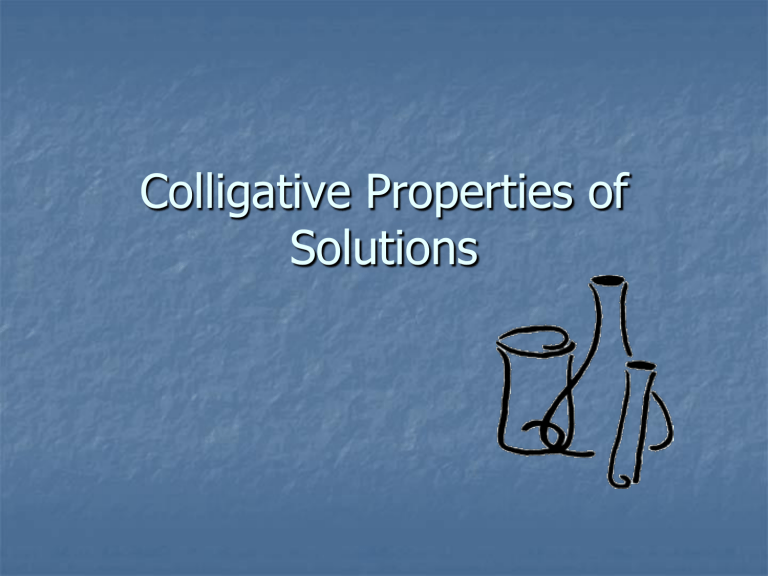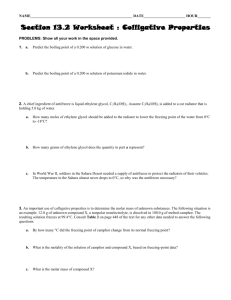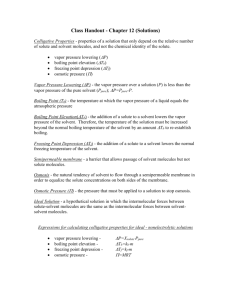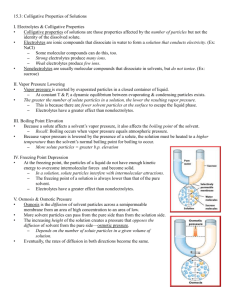
Colligative Properties of Solutions Colligative Properties Colligative Property: A property that depends only upon the number of solute particles (concentration), and NOT upon their identity. Three Important Colligative Properties of Solutions. Vapor-pressure lowering Boiling-point elevation Freezing-point depression Vapor-Pressure Lowering Vapor pressure: is the pressure exerted by a vapor that is in dynamic equilibrium with its liquid (molecules are moving back and forth between liquid and vapor phases) A solution that contains a solute that is not easily vaporized always has a lower vapor pressure than the pure solvent. This is true because in a solution, solute particles reduce the number of free solvent particles able to escape the liquid. Vapor-Pressure Lowering The decrease in a solution’s vapor pressure is proportional to the number of particles the solute makes in solution. ??? Why do we spread SALT on the roads in the winter? Freezing-Point Depression Freezing-Point Depression: The difference in temperature between the freezing point of a solution and the freezing point of the pure solvent (water). The presence of a solute in water disrupts the formation of the orderly pattern of ice. Therefore more kinetic energy must be withdrawn from a solution than from the pure solvent to cause the solution to solidify. Freezing-Point Depression Freezing-Point Depression The magnitude of the freezing-point depression is proportional to the number of solute particles dissolved in the solvent and does not depend upon their identity. Which would be a better salt for putting on icy roads, NaCl or CaCl2? Boiling-Point Elevation Boiling Point: The temperature at which the vapor pressure of the liquid phase equals atmospheric pressure. Because of the decrease in vapor pressure, additional kinetic energy must be added to raise the vapor pressure of the liquid phase of the solution to atmospheric pressure to initiate boiling. Boiling-Point Elevation Boiling-Point Elevation: The difference in temperature between the boiling point of a solution and the boiling point of the pure solvent. The boiling point of a solution is higher than the boiling point of the pure solvent. Boiling-Point Elevation The magnitude of the boiling-point elevation is proportional to the number of solute particles dissolved in the solvent. It takes additional kinetic energy for the solvent particles to overcome the attractive forces that keep them in the liquid. Boiling-Point Elevation The water molecules are attracted to ions in solution, the ions “hold” the water molecules down instead of allowing them to be released into the vapor phase. The water molecules need more energy to “escape” from the ions in solution! What happened? Conc. dillute Initial Final What conditions exist when the equilibrium point is reached and no further change in the volumes occurs?







